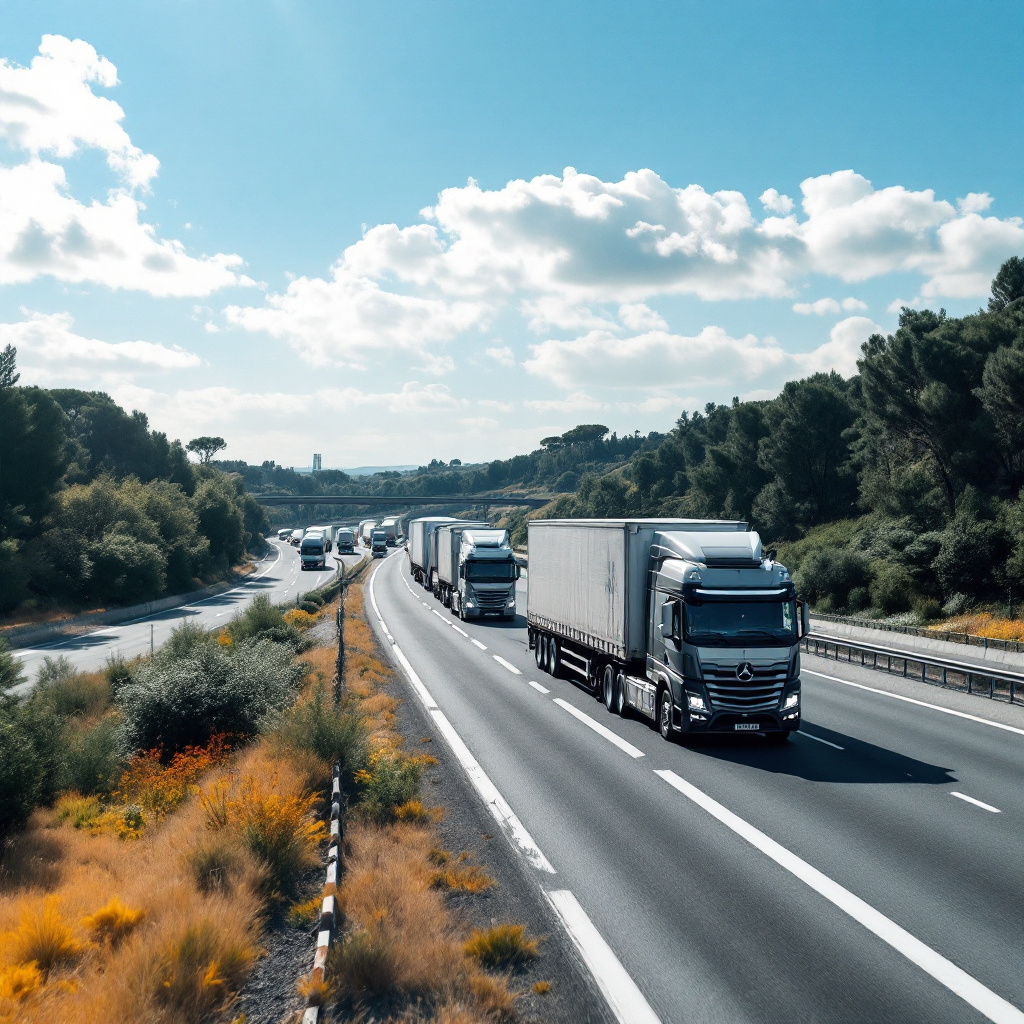The route between Lisbon (Portugal) and Rome (Italy) spans approximately 2,100 kilometers and typically takes 21–23 hours of driving time by road. This key corridor links southwestern Europe with the heart of Italy, fostering trade and economic collaboration between the two regions. This article explores the opportunities, challenges, and critical aspects of freight transportation along this route.
1. Economic Significance of the Route
Lisbon and Rome are major economic and cultural centers, each contributing significantly to regional and international trade:
- Lisbon — Portugal’s capital and main port, exporting wine, olive oil, textiles, and ceramics.
- Rome — Italy’s capital, known for its strong demand for consumer goods, fashion products, and agricultural imports.
The “Lisbon – Rome” route supports the flow of goods essential for both economies, strengthening ties within southern Europe.
2. Lisbon – Rome Route Features
The “Lisbon – Rome” route combines modern infrastructure with multimodal transport options to facilitate efficient logistics:
- Transport Infrastructure:
- Key highways include Portugal’s A6, Spain’s AP-7, and France’s A8, connecting to Italy’s A10 and A1.
- Rail networks offer intermodal transport solutions for bulk cargo.
- Major logistics hubs in Lisbon, Barcelona, and Milan ensure streamlined cargo handling and distribution.
- Types of Transportation:
- Road Freight: The most flexible and widely used method for transporting goods.
- Rail Freight: A cost-effective and sustainable alternative for large shipments.
- Multimodal Transport: Combines road, rail, and maritime options to optimize costs and efficiency.
3. Main Types of Cargo
- Agricultural Products:
- Lisbon exports wine, olive oil, and fresh produce to Rome.
- Rome supplies processed foods, cheese, and beverages to Lisbon.
- Industrial Goods:
- Lisbon ships textiles, ceramics, and construction materials to Italy.
- Rome provides machinery, automotive parts, and high-tech equipment.
- High-Value Goods:
- Pharmaceuticals, luxury goods, and fashion items require secure transportation solutions.
- Refrigerated Cargo:
- Ensures the safe transportation of perishable items, including seafood and dairy products.
4. Logistical Challenges
- Cross-Border Compliance: Navigating customs and regulatory requirements across Portugal, Spain, France, and Italy.
- Seasonal Congestion: High tourist traffic in Italy and Spain during peak seasons can cause delays.
- Environmental Regulations: Adherence to EU emissions standards is essential for road and rail freight.
- Long-Distance Coordination: Managing driver schedules, fuel efficiency, and vehicle maintenance over extended routes.
5. Lisbon – Rome Route Advantages
- Economic Connectivity: Strengthens trade relationships between southwestern and southern Europe.
- Modern Infrastructure: Highways, ports, and rail networks streamline freight operations.
- Diverse Cargo Options: Suitable for agricultural, industrial, and high-value goods.
6. Business Recommendations
- Leverage Multimodal Logistics: Utilize rail and maritime options where possible to reduce costs and environmental impact.
- Plan for Seasonal Variations: Adjust schedules to account for peak tourist seasons in Spain and Italy.
- Adopt Digital Tools: Use platforms for real-time tracking and efficient documentation management.
- Partner with Reliable Carriers: Collaborate with logistics providers experienced in cross-border operations.
Conclusion
The “Lisbon – Rome” route is a critical logistics link connecting southwestern and southern Europe. By leveraging advanced infrastructure, sustainable practices, and reliable partnerships, businesses can enhance supply chain efficiency and capitalize on the opportunities provided by this important corridor.


